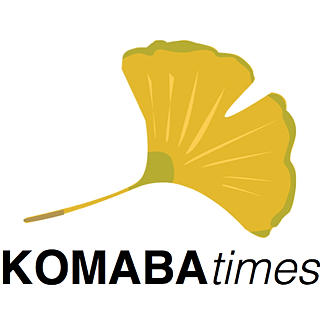The JEA Identity Crisis
- Komaba Times
- Feb 1, 2019
- 4 min read
Updated: Oct 10, 2019
By LISA BUCKLAND

The PEAK website page on JEA - most likely a prospective student’s first impression of the JEA programme
International students undoubtedly always have trouble identifying themselves within their university and I am no stranger to this problem. As a student enrolled in the Japan in East Asia (JEA) programme, I have had to explain my degree to almost everyone I talk to, back home in the UK, in Japan and even in my university to April-entry students. What is “Japan in East Asia” and why do we struggle with it?
The PEAK website describes it as a programme that “aims to provide students with a wide range of social science and humanities courses to develop an advanced understanding of Japanese/East Asian politics, economy, society and culture in a global context”. I found I wasn’t alone in needing to reread that multiple times. The PEAK website is the primary source of information that prospective students have when making their university degree selections and there is surprisingly little information about what JEA actually is. The words “global”, “international” and “interdisciplinary” are floated around the website, but Mimi, a first year JEA student, says when she arrived she didn’t have “much idea of what exactly [she] would be studying”.
Unlike other Todai students, PEAK students join the university with a predetermined major, either JEA or Environmental Science (ES). I wasn’t alone in being confused in initially thinking we were “JEA students” from our first year. In fact, first year PEAK students are not “JEA” or “ES” students but students of the College of Arts and Sciences in the Junior Division.
There seems to be confusion over what the degree is, so, what did people think they’d be studying before arriving? Sarah, a JEA student, thought she’d be studying International Relations “with a broader perspective, not narrowed down to Japan”. It seems this emphasis on being “global” influenced many in my cohort and Mimi, Sarah, Tom, Sally and Alice all call it “International Relations” with a focus on East Asia. I’ve also found it easier to rename my course when talking to friends or family and we’re even encouraged to do so in our Japanese class where our teacher taught us to call it “kokusai kankei [国際関係]” (International Relations). Sarah and Tom both say they don’t even tell anyone they’re studying “JEA” so they don’t have to explain it.
It’s no doubt easy to get stuck in this existential rabbit hole of what our programme really is and how we identify ourselves within it, particularly when we’re in the midst of summer finals, a heat wave and almost a year into our degree. It also seems non-US-background students who aren’t accustomed to liberal arts degrees find this even more challenging, as the alternative would have been a university degree specialising from year 1. Professor Fusako Beuckmann, Head of the PEAK Junior Division, acknowledges these difficulties and emphasises the University of Tokyo’s unique liberal arts structure even within Japan.
In 1949 the first dean of the College of Arts and Sciences, Tadao Yanaihara, emphasised the merit of this liberal arts system, arguing “by possessing this strong foundation of knowledge, [students] will be less prone to bias, and will be encouraged to cultivate a boundless enthusiasm for the truth”. Arguably the liberal arts foundation provides a broad basis of knowledge, preventing bias in a certain field and allowing for interdisciplinary approaches to both the junior division and future studies. Professor Shiho Maeshima, Director of the JEA Senior Division, points out that defining one’s degree in the junior division is not a problem unique to PEAK students but one shared by most juniors in the College of Arts and Sciences.
Perhaps the ambiguity and wide range of courses we take provide us with the task of defining our course for ourselves and shaping it to our own ends. This is emphasised through the scarcity of required courses for JEA junior division students. Although this can lead to a sense of aimlessness with no clear goal and often the feeling that we are being introduced to a subject, enjoying it and then receiving no follow-up courses, it also means we are able to explore a plethora of fields and change our preconceptions on what we wanted to study.
If you would have asked me what I wanted to study last year I would have told you “International Relations” and if you ask me now I’m not entirely sure. Perhaps this feeling of uncertainty can be disconcerting but it’s also a part of the reshaping that the liberal arts programme strives to do. Through taking so many different courses we gain an insight, and an interest, into so many different fields. Not being able to narrow down our interests or degree, “defining” our knowledge becomes even more challenging and rewarding.
We begin our university careers with a set of expectations and often with an idea of what we’re truly interested in, what we think we’re going to study, and sometimes even what we want to do after our undergraduate degree. There’s no denying that the degree has an ambiguous title, maybe it does need to “come clean about the fact that it’s a humanities and social sciences course in general” at least in the first two years, as Alice argues. Our foundations are varied and perhaps not of great depth, particularly compared to undergraduate degrees that specialise throughout, but maybe the importance of the degree is that it unroots our preconceptions. It allows us to reform our interests, and frame and shape the degree however we want.





Comments